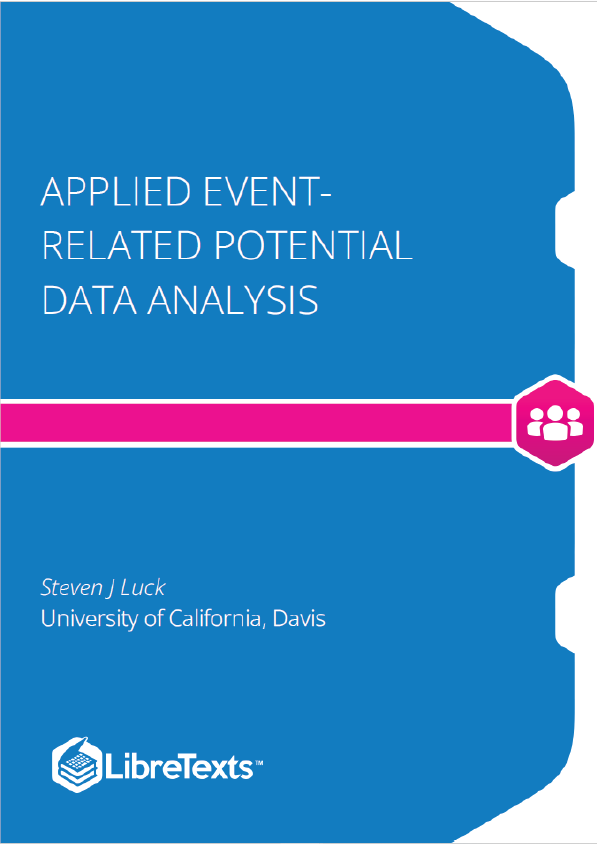If you place a metal disk (an electrode) on the skin overlying the skull, you can pick up voltages that are generated in the brain. This is the electroencephalogram or EEG. The EEG is a very complex signal that includes voltages associated with the thousands of different neural processes that are happening at any given moment in time. It’s difficult to pull apart all of these different processes from the raw EEG, but a set of data processing operations can be applied to the EEG to pull out the electrical potentials (voltages) that are related to specific events, such as the appearance of a new object or an arm movement. These event-related potentials (ERPs) have proven to be very useful for studying a broad range of issues in the mind and brain sciences.
The purpose of this book is to provide you with a practical overview of the data processing operations that are used to extract the ERPs from the EEG. This includes preprocessing operations that reduce noise and artifacts, the signal averaging operation at the core of extracting the ERPs, and the postprocessing operations that are used to convert the ERP waveforms into a small set of variables for statistical analysis. You will practice these operations using real data and an open-source Matlab ERP analysis package (ERPLAB Toolbox). You’ll also learn how to automate the operations by writing simple Matlab scripts. Once you’ve gone through the exercises in this book, you should be ready to tackle the analysis of your own experiments.
In this chapter, you will learn to:
Install the EEGLAB and ERPLAB and download the data for the exercises
- Load EEG and ERP data
- Plot EEG waveforms and spectra
- Plot ERP waveforms and scalp maps
- Update the Matlab PATH when you install or update EEGLAB/ERPLAB
This chapter is designed to provide key background knowledge you’ll need for the rest of the book. We’ll begin by describing the goals of this book and the background knowledge you should have. Then we’ll show you how to install the software and download some data, followed by a few exercises so that you can learn the basics of the EEGLAB and ERPLAB software packages that will be used throughout the book.
Getting Started
This section of Chapter 1 provides some important background information that you need to know to make effective use of this book. The whole book will make much more sense if you read this section first!
The Goal of This Book
The primary goal of this book is to help students and researchers learn how to process and analyze event-related potentials (ERPs). My other ERP book (Luck, 2014) focuses on providing a conceptual understanding of ERPs, and the present book focuses on applying those concepts to real data. Theory is important, but there is no substitute for loading up real data—with all its warts and complexities—and figuring out how to go from a gigabyte of raw EEG files to a set of statistical analyses and figures that are ready for publication.
At its essence, this book is a set of data processing and analysis exercises that are wrapped in explanatory text. ERP analysis involves a million decisions, such as whether to filter before versus after artifact rejection and what measurement window to use for quantifying the amplitude of an ERP component. The exercises in this book are designed to give you experience making choices that will lead to the most robust and valid conclusions. In theory, you could read the book without doing the exercises, but that would be like trying to learn painting from a textbook without ever picking up a paintbrush. So fire up your computer and get ready to process some data!











